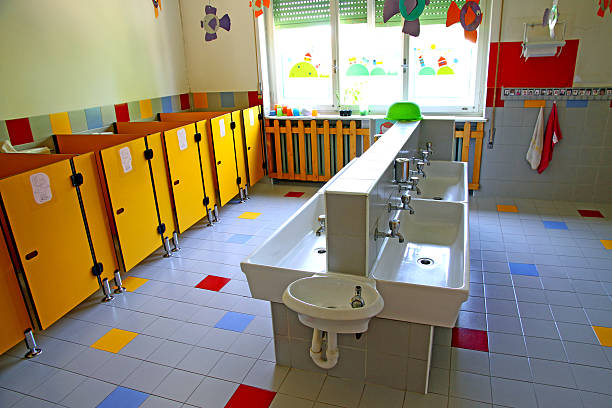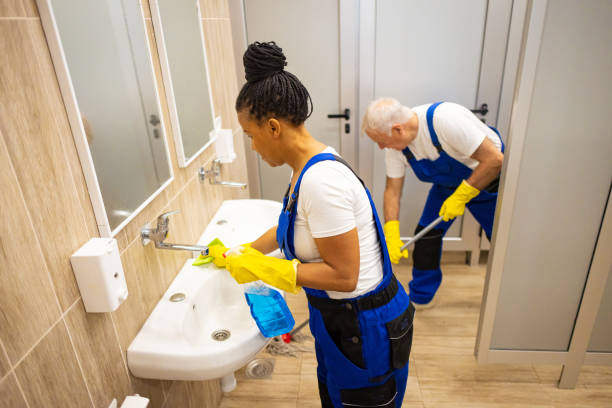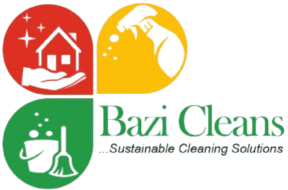A clean and well-maintained school toilet is essential for ensuring the health, comfort, and overall well-being of students and staff. Schools are high-traffic environments, and restrooms are among the most frequently used spaces. School toilets can become breeding grounds for bacteria, viruses, and unpleasant odors without regular cleaning and proper maintenance, leading to hygiene-related illnesses and discomfort among students. In this comprehensive guide, we’ll explore why school toilets should be cleaned regularly and outline effective strategies for maintaining them.

Why Regular Cleaning of School Toilets Is Essential
1. Prevents the Spread of Germs and Diseases
One of the primary reasons school toilets must be cleaned regularly is to prevent the spread of harmful bacteria and viruses. School environments expose students to various infectious diseases, and unsanitary restrooms can exacerbate the problem. Germs from unclean surfaces can easily transfer to students’ hands, increasing the risk of illnesses like stomach flu, diarrhea, and respiratory infections.
2. Promotes Student Health and Well-being
A clean school toilet directly contributes to the overall health of students. Dirty restrooms can discourage students from using the facilities, leading to health problems such as urinary tract infections and dehydration due to avoiding water intake. Regular cleaning ensures that students have access to sanitary facilities, reducing the risk of illnesses caused by poor hygiene.
3. Enhances the Learning Environment
The cleanliness of school toilets plays a vital role in maintaining a positive and focused learning environment. Unpleasant odors, unclean floors, and overflowing trash bins can be distracting for students and create discomfort throughout the school day. When students feel safe and comfortable using the facilities, they can concentrate better on their studies.
4. Encourages Proper Hygiene Habits
A well-maintained restroom encourages students to practice good hygiene, such as washing hands after using the toilet. If students consistently encounter unclean conditions, they may develop poor hygiene habits, which can have long-term health consequences. A clean restroom reinforces the importance of personal hygiene and sanitation.
5. Prevents Plumbing Issues and Costly Repairs
Neglecting regular toilet maintenance can lead to clogged drains, leaking pipes, and broken fixtures. Over time, minor plumbing issues can escalate into costly repairs that burden the school’s budget. Routine cleaning and maintenance help identify potential problems early and prevent expensive fixes.
6. Reduces Unpleasant Odors
Unclean restrooms often emit foul odors due to urine stains, mold growth, and bacterial buildup. These unpleasant smells can make restrooms unbearable for students and staff. Regular cleaning with disinfectants and proper ventilation eliminates odor-causing bacteria, keeping restrooms fresh and pleasant.
7. Creates a Positive Impression of the School
Parents, visitors, and school inspectors often judge a school’s hygiene standards by the cleanliness of its restrooms. A well-maintained toilet reflects a school’s commitment to student welfare, while a neglected restroom can tarnish its reputation. Clean restrooms contribute to a more professional and welcoming school environment.
How to Maintain School Toilets Effectively
1. Establish a Cleaning Schedule
Having a structured cleaning schedule ensures that school toilets remain hygienic throughout the day. Schools should implement the following cleaning frequencies:
- Daily Cleaning: Disinfect all surfaces, mop floors, refill soap and paper towel dispensers, and empty trash bins.
- Hourly Checks: Conduct quick inspections to ensure cleanliness and address minor spills or clogs immediately.
- Deep Cleaning (Weekly/Monthly): Scrub tiles, descale urinals and toilets, and perform thorough maintenance checks.
2. Use Effective Cleaning Products
Using the right cleaning supplies ensures thorough sanitation. Essential cleaning products include:
- Disinfectant cleaners to kill bacteria and viruses.
- Multi-surface cleaners for sinks, counters, and walls.
- Toilet bowl cleaners to remove stains and bacteria.
- Deodorizers to maintain freshness.
- Mops and microfiber cloths for efficient cleaning.
3. Provide Adequate Hygiene Supplies
Students should have access to necessary hygiene supplies, including:
- Soap dispensers (refilled daily).
- Hand sanitizer stations.
- Toilet paper in each stall.
- Paper towels or hand dryers. Ensuring that these supplies are always available encourages proper hygiene practices.
4. Train Cleaning Staff and School Personnel
Proper training for custodial staff ensures efficient cleaning practices. Staff should be educated on:
- Correct usage of cleaning chemicals.
- Importance of wearing protective gloves.
- Proper techniques for scrubbing, mopping, and disinfecting surfaces.
- Safe handling and disposal of waste materials.

5. Implement a Reporting System for Maintenance Issues
Schools should have a clear reporting system where students and staff can report broken fixtures, leaks, or supply shortages. A designated maintenance team should address these issues promptly to prevent further damage and maintain sanitation standards.
6. Improve Ventilation in Restrooms
Proper ventilation helps prevent mold growth and reduces odors. Schools should install exhaust fans or open windows to allow air circulation. Regular air fresheners can also contribute to a more pleasant restroom environment.
7. Educate Students on Proper Restroom Etiquette
Teaching students about restroom hygiene can help maintain cleanliness. Schools can display posters with reminders such as:
- “Wash Your Hands After Using the Toilet.”
- “Flush After Use.”
- “Dispose of Trash Properly.”
- “Report Any Issues to Staff.” Creating awareness ensures that students take responsibility for maintaining restroom hygiene.
8. Use Durable and Easy-to-Clean Materials
When designing or renovating school restrooms, using materials that are easy to clean and resistant to wear is crucial. Some recommended materials include:
- Porcelain or stainless steel sinks and toilets for durability.
- Tile or epoxy flooring for easy maintenance.
- Touchless fixtures to reduce contact and the spread of germs.
9. Conduct Regular Inspections
Routine inspections help ensure that cleaning standards are maintained. School administrators should:
- Perform surprise inspections.
- Seek student and staff feedback on restroom cleanliness.
- Adjust cleaning schedules based on restroom usage and feedback.
10. Promote a Culture of Cleanliness
Schools should foster a culture of cleanliness by involving students in maintaining hygiene. Initiatives like “Clean Restroom Rewards” or student-led restroom monitoring can encourage students to take pride in keeping facilities clean.
Final Thoughts
Maintaining clean school toilets is crucial for student health, hygiene, and overall well-being. Regular cleaning and effective maintenance strategies prevent disease, enhance the learning environment, and create a positive school experience. By establishing a structured cleaning routine, using proper cleaning products, educating students, and involving staff in hygiene practices, schools can ensure their restrooms remain safe, sanitary, and welcoming for all.
A commitment to clean restrooms is a commitment to student success and well-being. Schools that prioritize restroom hygiene set a positive example and create a more comfortable learning environment for everyone. Prioritize cleanliness today and make a difference in students’ health and happiness!
